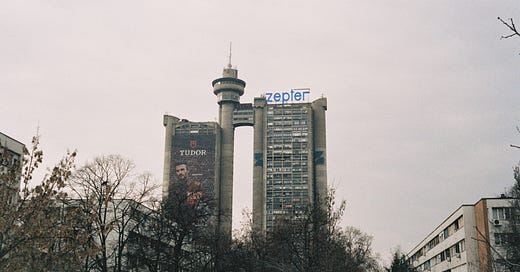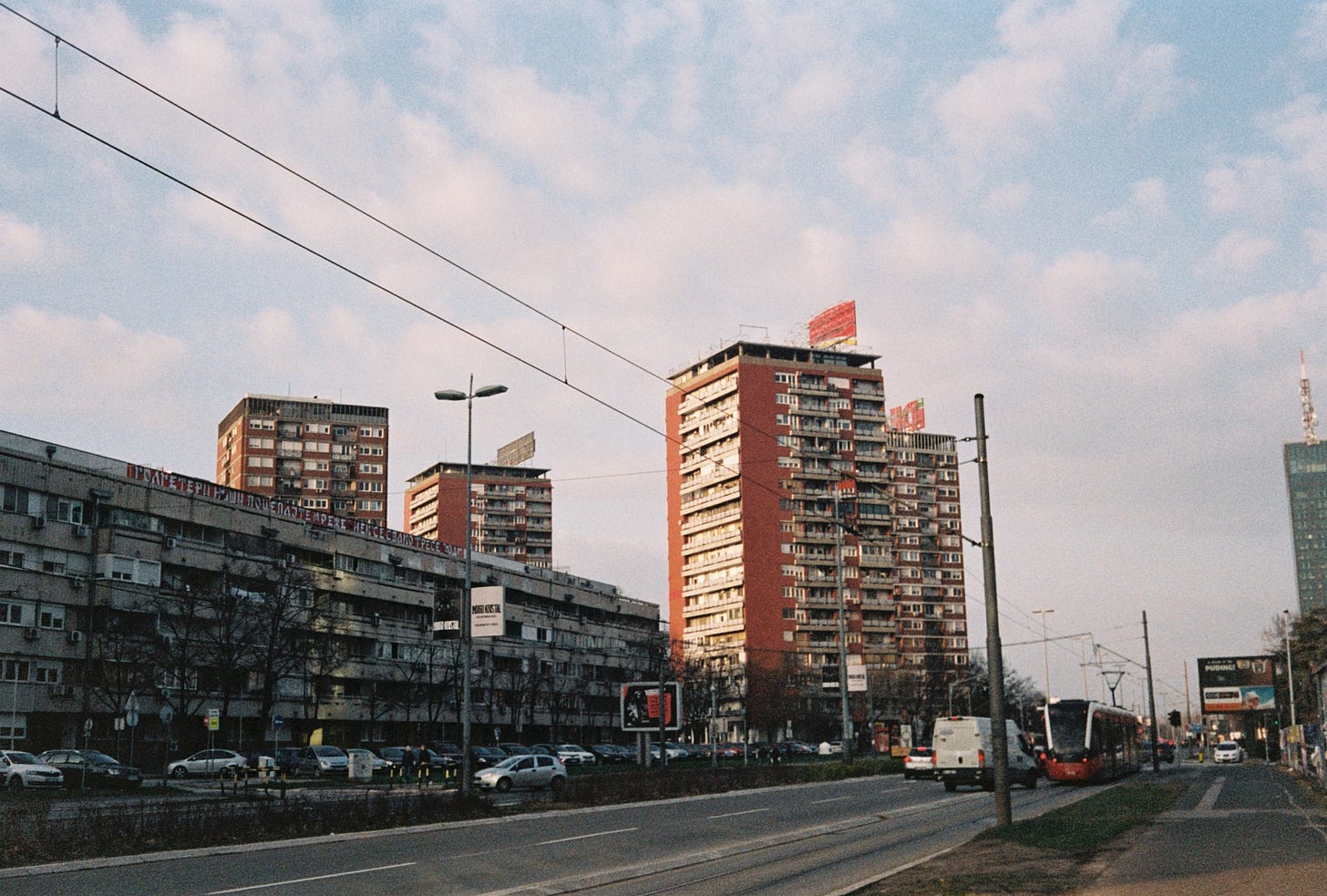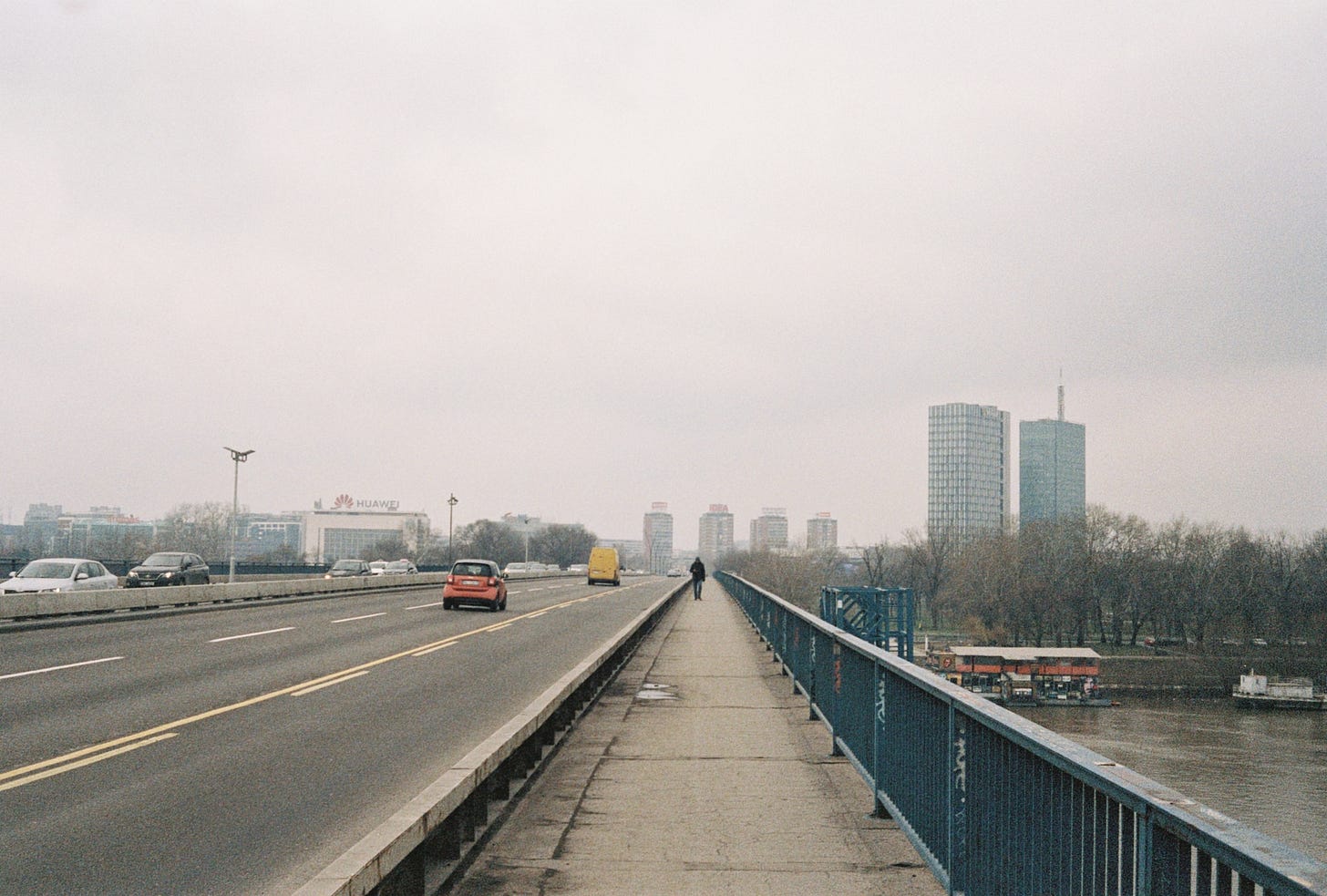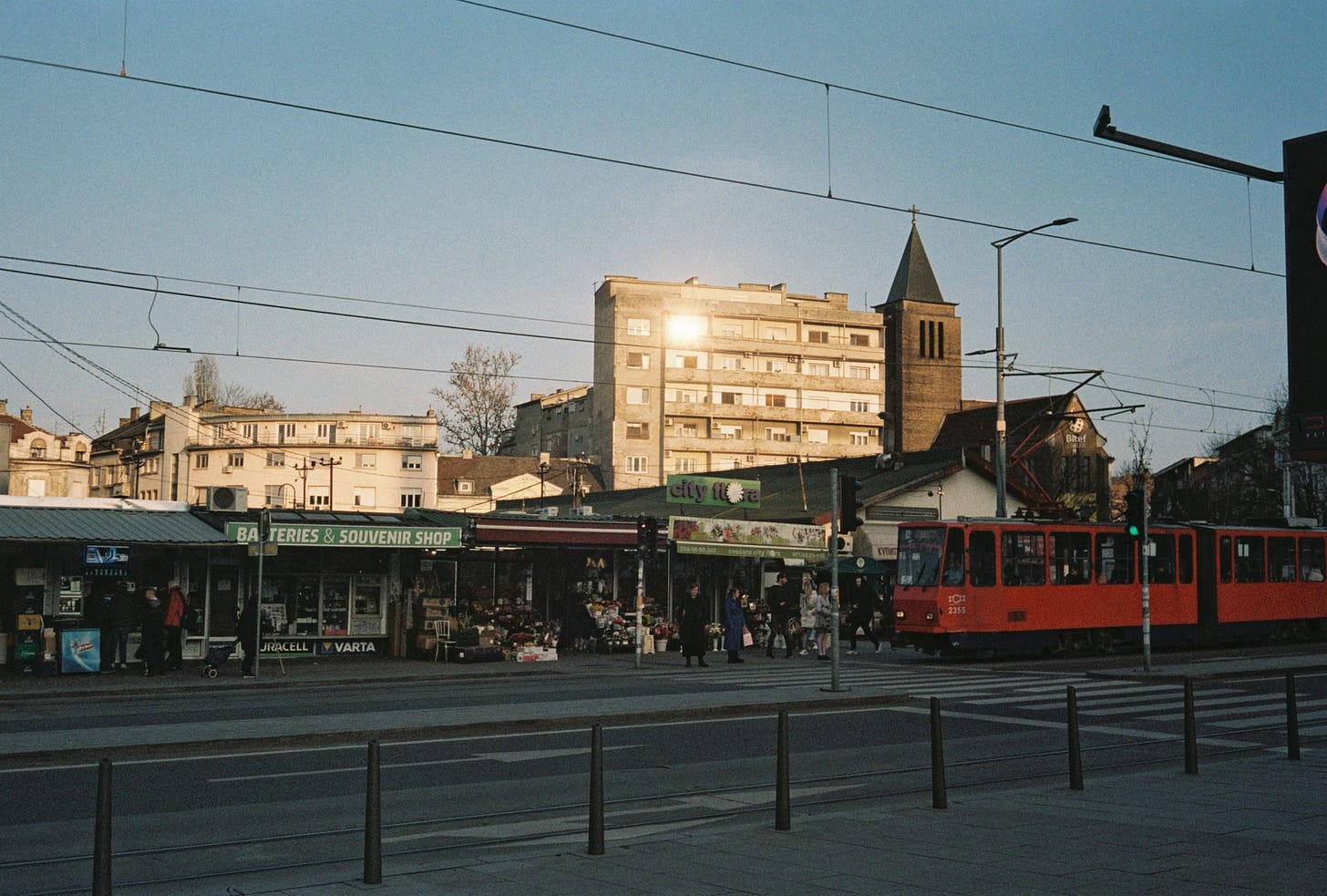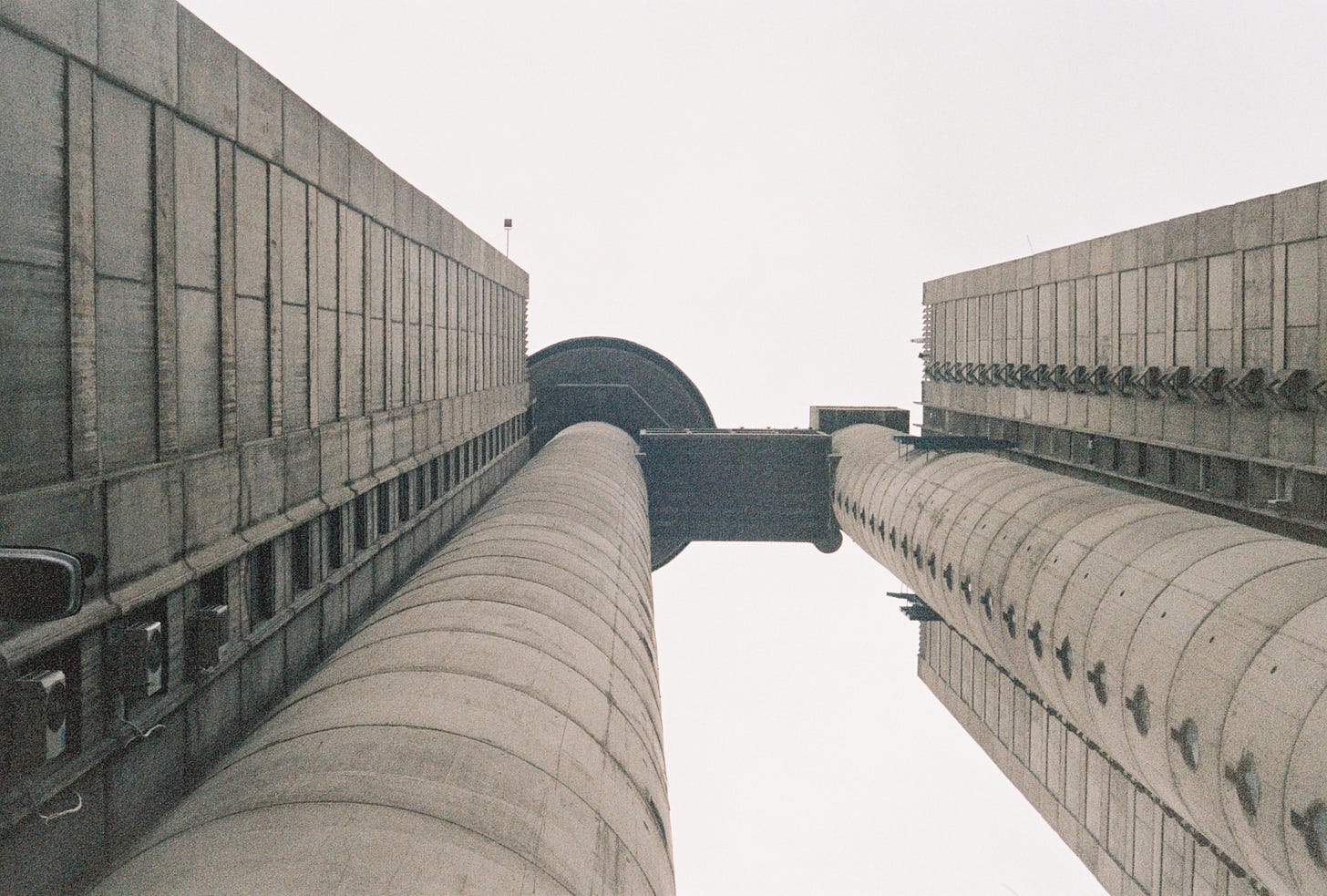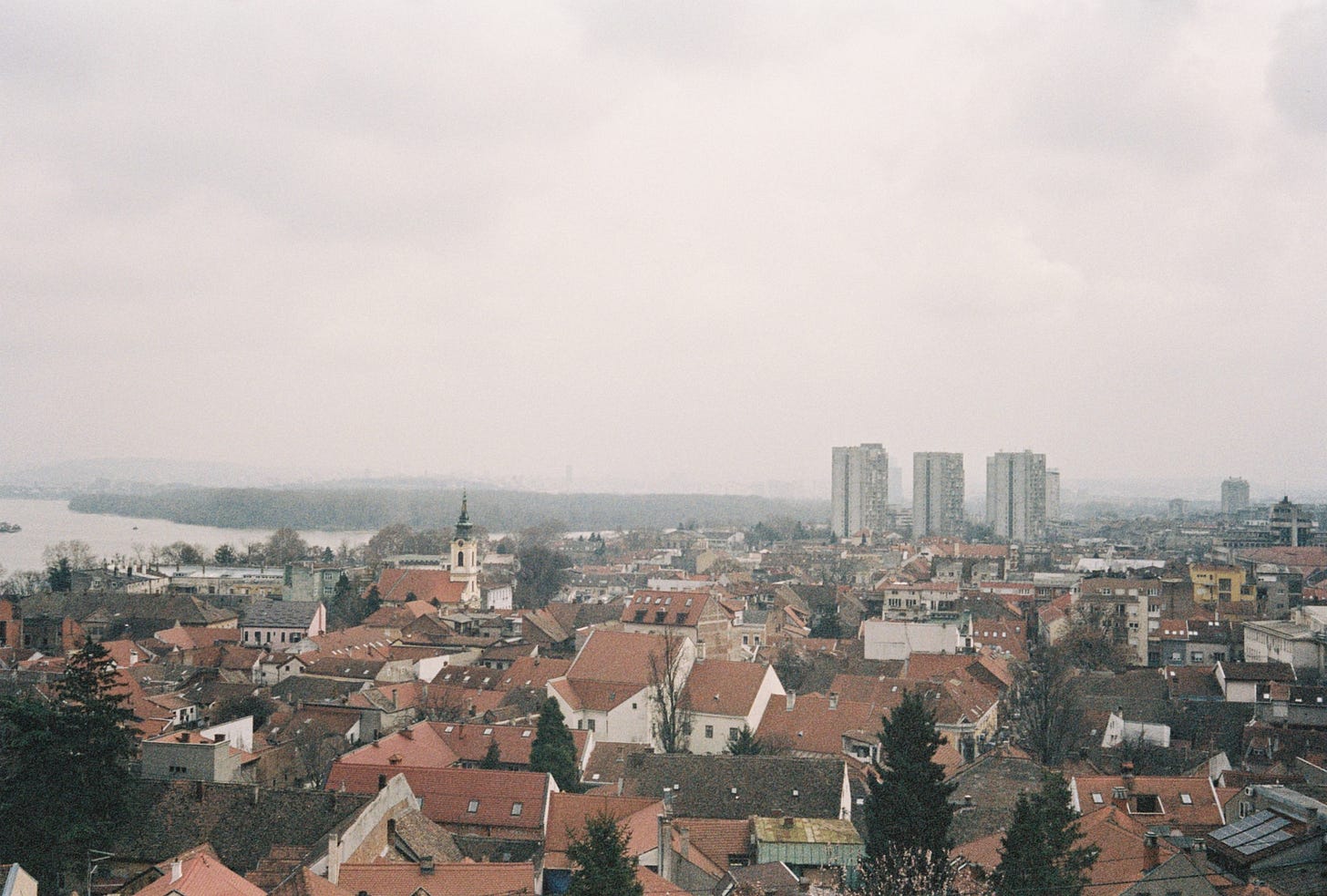Sketches of Novi Beograd
Jack Martin takes us around Belgrade's Novi Beograd, the ambitious planned district of the Serbian capital, now rapidly growing and only reminiscent of post-war socialist dreams.
For most that arrive in Belgrade, the Western City Gate will be the first thing they see. Completed in 1977, this 36-storey brutalist triumph was designed to welcome visitors into the heart of the former Yugoslav capital. It consists of two towers, connected by a long-defunct revolving restaurant and a red digital clock which can be viewed from miles around. A billboard featuring David Beckham wearing a flash watch beams down on the neighbourhood of Novi Beograd (New Belgrade) below.
Built and planned by party apparatchiks, Novi Beograd dominates the left bank of the River Sava, providing a counterpoint to the Habsburg-era city on the other side. It is divided into “blocks”, all of which are uniformly numbered and consist of long, grey, taciturn apartment buildings, about six or seven storeys high. The architectural boldness of Novi Beograd reflects Tito’s grand vision of a strong, courageous and independent Yugoslavia, aiming to unite the region’s different ethnic and religious groups and chart a course between Soviet and US cold war interests. However, these structures are now deteriorating, decaying and decomposing; just as Tito’s dream did with his death and the onset of the Balkan Wars in the 1990s.
Novi Beograd serves as the centrepiece of my day long walk from the more ‘tourist friendly’ locales of Vracar, with its huge sepulchral Cathedral of St Sava – Vladimir Putin laid its foundation stone, indicating Serbia’s current political direction – to Zemun, a well preserved, slightly bohemian suburb which hugs the left side of the Danube. Instead of the incessant buzz of cars, trolleybuses and conversations shouted into phones, prevalent elsewhere in the city, the wide avenues and vertical architecture of Novi Beograd make it ghostlike. Every apartment building is home to an angry dog, barking into a void as I pass. It is eerie, reminiscent of an American video game where bands of Soviets shadow you through a soulless hellscape, with quietly atmospheric music in the background.
Like Western City Gate, Novi Beograd is home to several modernist masterpieces which cut through its rigid grid system. The immense Palace of Serbia looms over the verdant Usce Park and still looks futuristic, nearly 70 years after its completion. The rectangular orange windows of Novi Beograd City Hall reflect back any light that has cut through the thick Belgradian pollution onto the statues celebrating Yugoslav workers surrounding it. The Sava Centar, one of the largest audience halls in Europe, looks like Milton Keynes on acid.
To me, Novi Beograd is a wonder, but not just due to its buildings - but because it represents a time of grand visions and beliefs; of community, of improvement, of something larger than irony, or Perelló olives, or Elon Musk.

